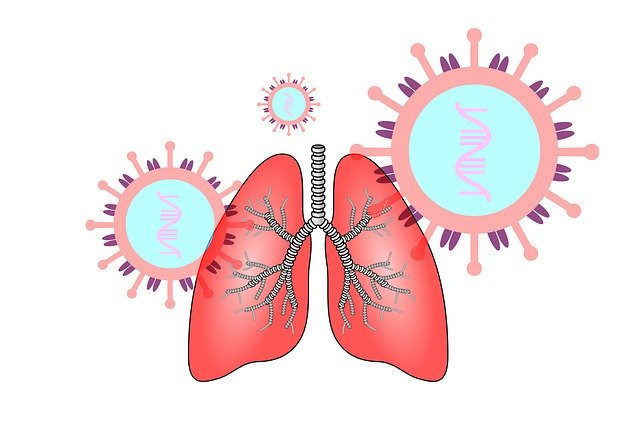The coronavirus is making waves in the headlines and with good reason. It’s led to quarantines, including an entire cruise ship, travel bans, and cities on lock down. The virus has spread to over 30 countries with the death toll approaching 3,000 people. The Chinese even had a hospital built in eight days to deal with the outbreak. What is the coronavirus, where did the outbreak originate, what are the symptoms, how can you protect yourself, and what’s the connection between the coronavirus and snakes?

Table of Contents
Facts About The Coronavirus
1. Covid-19 Is A New Strain Of The Coronavirus
The Covid-19, or novel coronavirus, is an entirely new viral strain that has never been identified in humans. Although, not much is known about the virus, it has been confirmed that the infection is transmitted via person-to-person contact, similarly to how a person having a cold can infect another person.
Modes of transmission include being within six feet of an infected person who is coughing or sneezing. If you breathe in the respiratory droplets that permeate the air, you’re now exposed. You can also be exposed by shaking hands or coming into close contact with someone who has the virus or by touching an infected surface or object.
2. The Outbreak Began In China
The viral outbreak began in an animal and seafood market in Wuhan City, located in the Hubei Province of China. The market sold live animals and has subsequently been quarantined. The city of Wuhan has been sealed off, and all roads are being monitored.
Travel restrictions are being enforced in China, with cancellations of both incoming and outgoing flights. Countries with outbreaks of the virus have prohibited Chinese citizens from entering.
3. The Origins Of The Virus
This is creepy. The virus is believed to originate in snakes. There are two types of snakes that are thought to be carriers. Both are indigenous to the southeastern region of China where the virus was initially detected.
However, some experts disagree with this stance, believing that the novel virus is similar to the virus found in Chinese horseshoe bats. The coronavirus can also infect birds and mammals, and is considered zoonotic, meaning it can be passed from animals to humans, albeit rare.
4. How Many People Have Died?
While most of the deaths from the coronavirus have taken place in China, the virus has now spread outside of China, to countries in Europe, Australia, North America, Thailand, South Korea, the Middle East, Japan, and Vietnam. The death toll is close to 3,000 persons, with over 45,000 cases of infection globally.
5. Most Of Us Have Had The Coronavirus
The coronavirus is part of a group of viruses responsible for the common cold and other respiratory illnesses like bronchitis and pneumonia. There are four types of coronaviruses, each one differing from the other: alpha, delta, beta, and gamma. All four types are airborne, with the alpha and beta strains being the only types known to infect humans.

6. SARS And MERS Are Coronaviruses
Remember the scare we had a few years ago with SARS, or Severe Acute Respiratory Syndrome? SARS, is a beta coronavirus.
In 2002, there was a severe outbreak in Guangdong province of China. The virus was responsible for killing almost 800 people. The first person to be infected was a farmer in Foshan County.
MERS, or Middle East Respiratory Syndrome is also caused by a coronavirus. Four out of every 10 people who became infected died. Fortunately, the novel coronavirus, although more widespread, is not as deadly.
7. There Is No Cure
There is no cure for the coronavirus. Like other viral infections, the virus must run its course. The majority of coronaviruses are not dangerous. The greatest potential danger lies in secondary infections that can result from exposure, such as pneumonia, SARS, respiratory shock, sepsis, and even kidney failure, which can be fatal.
Antibiotics are not effective against viruses, nor is there a vaccine, the only recourse doctors have is symptom-relief, including giving oxygen to patients who have difficulty breathing. Scientists at this time are developing a vaccine, but distribution is at least a year away.
8. Coronavirus Symptoms
Coronavirus affects the sinuses, nasal passages, and upper throat. Accompanying signs of infection associated with the virus include shortness of breath, sneezing, coughing, difficulty breathing, fever, headache, sore throat, runny nose, and a general feeling of malaise. A fever is typically the first sign of infection, along with a dry cough.
The incubation period of the virus is thought to be 10 to 14 days, with symptoms manifesting anywhere from two days up to two weeks after infection. When symptoms do appear, they resemble what you might notice when you have a cold. Essentially, people can have the virus for up to 14 days and have no idea they are infected. This fact, accounts in part for the spread of the virus, since people are unaware they’ve been exposed.
9. People At Highest Risk For Becoming Infected
Like most infections, the coronavirus varies in its severity. People with compromised immune systems, or those with chronic disease, are at the highest risk, including the elderly. The majority of people who have died have been over 60 years of age, with most of them being men.
Travel to China is obviously another risk factor for being exposed. In fact, most of the people who have become infected are those who have visited China from their own countries.
10. Prevention Is Best
There are ways to reduce your risk of becoming infected with the coronavirus. Thoroughly wash your hands with soap and warm water for a minimum of 20 seconds several times a day, especially if you’ve been in close proximity to someone who is sick.
Keep your hands off your face, notably your mouth and nose, and cover both when coughing or sneezing. Avoid exposure by staying away from people who are known to be infected.
Disinfect frequently touched surfaces, and stay home if you’re not feeling well. Your immune system is likely compromised, and will increase your risk.
Key Points
Viral outbreaks are frightening and the coronavirus is no exception. Protect yourself by keeping your immune system strong. Eat a nutritious diet, get enough sleep, make time for self-care, and take immune-boosting supplements. Education is key when it comes to disease- prevention, which will always be the best medicine.
How has the coronavirus touched your life? Let me know in the comments:)
References:
(1) WebMED: Coronavirus
(2) MedlinePlus: Coronavirus Infections
(3) CDC: Common Human Coronaviruses
(4) CNN health: Coronavirus explained: What you need to know
(5) EXPRESS: Coronavirus death toll: How many have died from deadly virus? How many infected?
(6) Deaths From Corona Virus: How many deaths From Coronavirus


Over the last few days, I have been reading news reports about the spread of the coronavirus. It’s scary … especially because the symptoms are so similar to the common cold. Prevention is the best cure, I totally agree. I take vitamin C every day, since vitamin C is a great defense against infections and diseases. I will keep on doing this.
Some of my students are freaking out about the coronavirus and they are asking me many questions. Perhaps we could look at your article in class, it has some good information.
Basically, I tell my students not to panic and to take vitamin C if they are so worried, eat fruits and vegetables, and keep their immune system strong.
Hi Christine,
I’ve been watching the news reports, as well. They’re pretty sobering, aren’t they?! The virus starts out fairly innocuous, with symptoms resembling a cold. No big deal, it’s when it develops into secondary infections that it becomes serious and potentially life-threatening.
I know many people are freaked out. I’m glad I’m not one of them. Like you, I take vitamin C every day, which keeps my immune system strong. Vitamin D is another vitamin I take everyday to fortify immunity. It’s true – prevention will always be the best remedy. It’s not possible to live in a bubble and sequester ourselves away, so keeping ourselves strong is the best defense.
Your students are lucky to get such great advice from their teacher. Thanks so much for reading:)
Thanks for this very enlightening review of the coronavirus.
Few people know that the virus is communicable through direct contact, especially in countries that are not infected. The above mentioned symptoms have been found out to be related to most diseases that affect the airways, which is why people can hardly tell they’re infected. With just fever, runny nose and cough, the corona virus might truly be lurking around the corner without the victim realizing it.
This article will really help in a big way to let people know of the nature of the dreadful infection, and know how to avoid it should they accidentally come in contact with someone with the disease.
I’m definitely sharing this with friends to let them know these facts.
Hi John,
Thanks for reading my article on the cornonavirus. I felt it was a timely post. Yes, the virus is transmitted via direct contact, which is a pertinent fact to be aware of. The symptoms resemble those you’d have if you were coming down with a cold so many people aren’t overly concerned.
The infection becomes dangerous when it becomes secondary and affects the lungs, potentially developing into pneumonia and more serious issues. I’ll be following the latest headlines closely.
I appreciate you sharing my article:)
Hi,
You can really say that there is a panic going around concerning the coronavirus as it continues to spread around the world. We still have to wait to see if it becomes a full-blown pandemic. It has seemed to hit Italy hard with 12 recorded deaths but we have to wait and see if it starts to spread around Europe and America, as it will eventually do.
The problem is that we do not know if we have the virus and we do not know if we are spreading it to others. Healthy people could have the virus and then spread it to the elderly or those with health conditions which could be fatal to them. In effect, healthy people could be spreading the virus. One of the good news is that the number of cases in China is dropping – maybe indicating that the worse may be over but other area may get worse.
It is a deadly virus but more die from the flu every year.
Thanks!
Antonio
I think you’re right about people panicking. I’ve never been one to panic, but I do think it’s good to be educated about the virus. Like you, I doubt it will become a full-blown pandemic. I’m sad to hear about the deaths in Italy as the virus continues to spread.
The fact that people may not know they’ve been exposed is problematic in terms of the virus spreading. You could be around someone that’s contagious, yet they can appear to be health with no symptoms. I’m happy to hear the number of cases are decreasing in China. It will interesting as we continue to watch how the outbreak progresses.
Thanks so much for reading:)